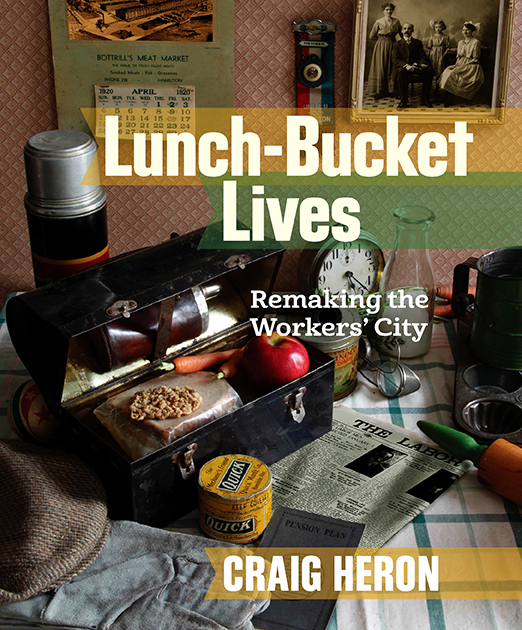Hamilton is an iconic city in Canada. For generations, it has been the quintessential factory town, a status confirmed by the view of fire-spewing, smoke-belching Dark Satanic Mills from the Burlington Skyway on the road to Niagara Falls. I was not raised there, and can’t remember any childhood visits. But, in the late 1970s, it was at the forefront of my mind as I started thinking about a PhD dissertation topic. I was interested in the wave of profound changes that hit industrial cities across the continent in the early years of the twentieth-century: large-scale corporate consolidation; new management and technological systems that ushered in mass production and a “Second” Industrial Revolution; a massive wave of new immigration from southern and eastern Europe; social engineering projects to tackle immorality, public health, and much more; the rise of consumerism and such commercial pleasures as vaudeville, movies, amusement parks, dancehalls, and radio; and vigorous new forms of working-class organizing, from industrial unions to radical political parties. Hamilton, I decided, would be a good place to dig in and find out how workers there (and, by extension, across the country) negotiated their way through these disruptive transformations.
As an outsider to the city, I had to learn the basic landmarks. Unlike Toronto, for example, the city grew up on the south side of Lake Ontario, and the old waterfront community became known as the North End. Hamilton Mountain (part of the Niagara Escarpment) lies to the south. I also had to learn to respect the strong community identity that helped the people of this “lunch-bucket” city hold up their heads proudly and defiantly towards snooty Toronto, only sixty kilometres away. There were more practical challenges. The city had an excellent public library with a Special Collections Department where many valuable historical documents had washed up over the years, but no municipal archives. Fortunately McMaster University’s archives had also started accumulating Hamilton material as well. Yet, a lot remains in dusty attics, closets, and basements across the city. I knocked on many doors of businesses and community institutions over the years, and was invariably welcomed and helped. I have particularly fond memories of hours spent at the Hamilton YWCA and IODE, both of which had some interest in the city’s “working girls.” I also trekked off to the Ontario Archives, the National Archives of Canada in Ottawa (now Library and Archives Canada), and the libraries of Cornell and Harvard universities, which had good runs of union journals.
There were intellectual challenges as well. From the beginning, it was clear that few of the stark stereotypes of class struggle – from cruel victimization to heroic militancy – could adequately capture the complexity of what I was finding. For many years, for example, the Conservative Party won most of the seats at all three levels of government. So I found myself having to explain the “Tory workingman,” as well as the stalwarts of the new Independent Labor Party that had the Tories on the run by the end of World War One. Similarly, I found class-conscious labour leaders arguing for the unity of the working class, but often ignoring their female members and denouncing immigrants from Italy, Poland, or China. In so many ways, however, I found working people asserting their own class-based understandings of the disruptive changes they faced and working out their own solutions, most often relying on the informal solidarities of family, workplace, and community. Ultimately, I concluded that the patterns of working-class response fell into a kind of fluid “realism” (not to be confused with conservatism), which varied depending on the opportunities and resources available to workers. That, I think, is the most important analytical tool that I am offering to scholars of working-class life.
Lunch-Bucket Lives: Remaking the Workers' City brings together the widest range of working-class experience available between the covers of one book. It enables readers and researchers to appreciate how the dynamics of household, paid workplace, and community associations interacted to shape working-class identities, consciousness, and practices of both compliance and defiance. In the end, I hope the working people of the “lunch-bucket” city will come into clearer focus than what can be seen from the Burlington Skyway.
Image: Between the Lines books
Craig Heron is a professor of history at York University. One of Canada’s leading labour historians, he is the author of numerous works on Canadian history, including The Workers Festival: A History of Labour Day in Canada, Booze: A Distilled History, and Lunch-Bucket Lives: Remaking the Workers’ City.
Bookmark It!
The Awards to Scholarly Publications Program has supported the publication of great Canadian academic books since 1941. This blog series shares the story behind some recently published ASPP-supported books, illuminating their lasting value to Canadian culture, society and research. Read more in this series here.
Livres á vous!
Le Prix d’auteurs pour l’édition savante soutient la publication de grands ouvrages universitaires canadiens depuis 1941. Cette série de blogue dévoile les coulisses de quelques-unes des publications récemment récompensées par le PAES, en mettant en lumière leur empreinte durable sur la culture, la société et la recherche canadiennes. Lisez davantage dans cette série ici.


